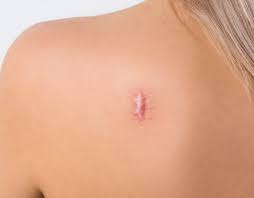Hypertrophic Scar Removal Treatments: Embrace Your Skin’s Potential
Hypertrophic scars are raised, thickened areas of skin that develop after an injury or surgery. Unlike keloids, hypertrophic scars remain confined to the original wound site and are often red, swollen, and painful. They occur due to excessive collagen production during the healing process, which leads to the formation of these prominent scars. While they are generally not harmful, hypertrophic scars can be cosmetically unappealing and may affect one's confidence.
Topical Treatments: First Line of Defense
For many, the first approach to managing Hypertrophic Scar Removal Treatments in Dubai (علاجات إزالة الندبات المتضخمة في دبي ) involves topical treatments. These include silicone gel sheets, creams, or silicone-based gels, which are known to help flatten and soften the scar over time. The application of these products can be done at home, providing a convenient and cost-effective way to begin treating scars. Regular use of silicone gel sheets has been shown to reduce the size, color, and texture of hypertrophic scars, making them less noticeable.

Steroid Injections: Reducing Inflammation
Steroid injections are another commonly used treatment for hypertrophic scars. The corticosteroids injected into the scar tissue help to reduce inflammation and inhibit the overproduction of collagen. This process gradually softens the scar and reduces its raised appearance. In many cases, steroid injections can significantly improve the texture and size of the scar after several sessions. This method is particularly effective for scars that are thick and painful.
Laser Therapy: Harnessing Light for Healing
Laser therapy has gained popularity as an advanced treatment for hypertrophic scars. This technique uses focused light to penetrate the skin and target the scar tissue. Fractional lasers, for example, create tiny columns of heat that stimulate collagen remodeling in the scar tissue, improving its appearance over time. Laser therapy can also help reduce redness and smooth out the surface of the scar, providing a more even and natural skin tone. It's a highly effective treatment, especially for scars that are resistant to other forms of therapy.
Pressure Therapy: Gradual Scar Flattening
Pressure therapy is often recommended for individuals with large hypertrophic scars, particularly those from burns or trauma. The method involves applying constant pressure on the scar with specialized garments, such as compression sleeves or bandages. This pressure helps to flatten the scar tissue and prevent further hypertrophic growth. It is a slow process, but with consistent use, pressure therapy can yield impressive results, particularly when combined with other treatments like silicone gel sheets or laser therapy.
Cryotherapy: Freezing Away Scar Tissue
Cryotherapy, or cryosurgery, involves freezing the hypertrophic scar tissue with liquid nitrogen. The freezing process causes the scar tissue to shrink and become less visible. Over time, cryotherapy can break down the excess collagen, which may lead to smoother skin. This treatment is typically used for more persistent scars that have not responded well to other treatments. Cryotherapy is a precise, localized approach that targets the scar tissue without affecting the surrounding healthy skin.
Microneedling: Stimulating Natural Healing
Microneedling is a technique that uses tiny needles to create micro-injuries in the skin, which triggers the body's natural healing process. This procedure stimulates collagen production and can help improve the texture of hypertrophic scars by encouraging the formation of new, healthier skin. As the skin heals, the scar tissue gradually becomes softer and more even. Microneedling is often combined with topical treatments or serums to enhance the effects and accelerate the healing process.
Embrace Your Skin's Potential:
The key to managing hypertrophic scars is persistence. While results may take time, the combination of these treatments can significantly improve the appearance of scars, restoring confidence and comfort. Whether you opt for topical treatments, laser therapy, or a combination of methods, embracing the potential of your skin is the first step toward a smoother, more even complexion. Each treatment option offers a unique approach to scar reduction, giving individuals the freedom to choose what works best for their needs. With the right treatment plan and consistent care, it is possible to transform hypertrophic scars into a smoother, more harmonious appearance.
Conclusion:
In conclusion, hypertrophic scars, while common, don't have to be permanent reminders of past injuries or surgeries. With a variety of effective treatments available, from topical options and steroid injections to advanced techniques like laser therapy and microneedling, individuals have the opportunity to significantly improve the appearance of their scars. Patience and consistency are key to achieving the best results. By embracing these treatment options and tailoring them to your skin's unique needs, you can unlock the potential for smoother, healthier skin and regain your confidence.
